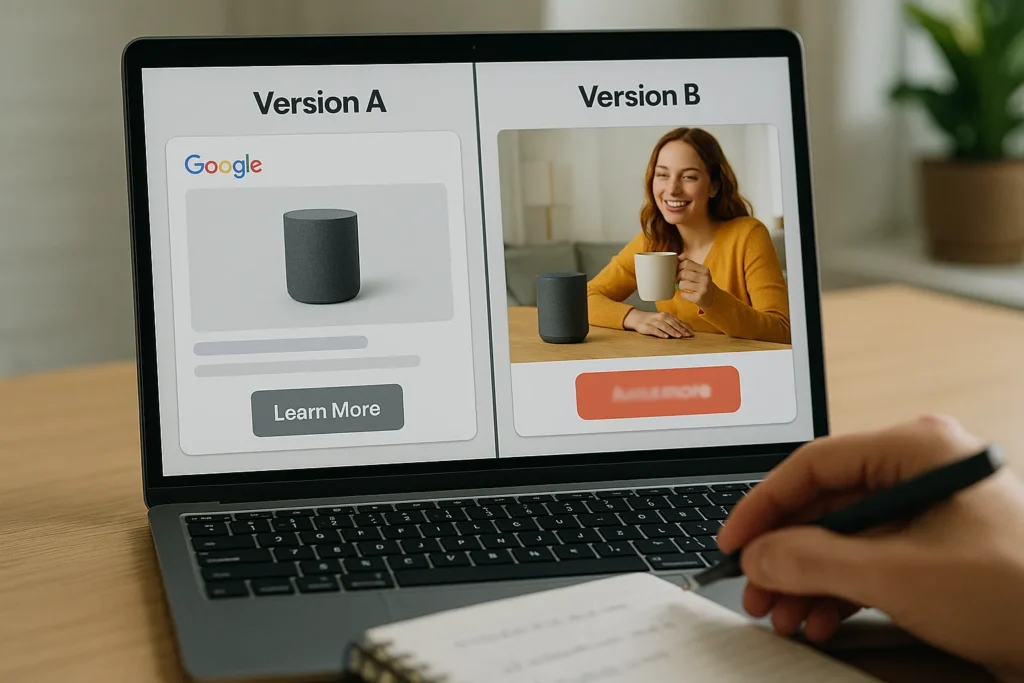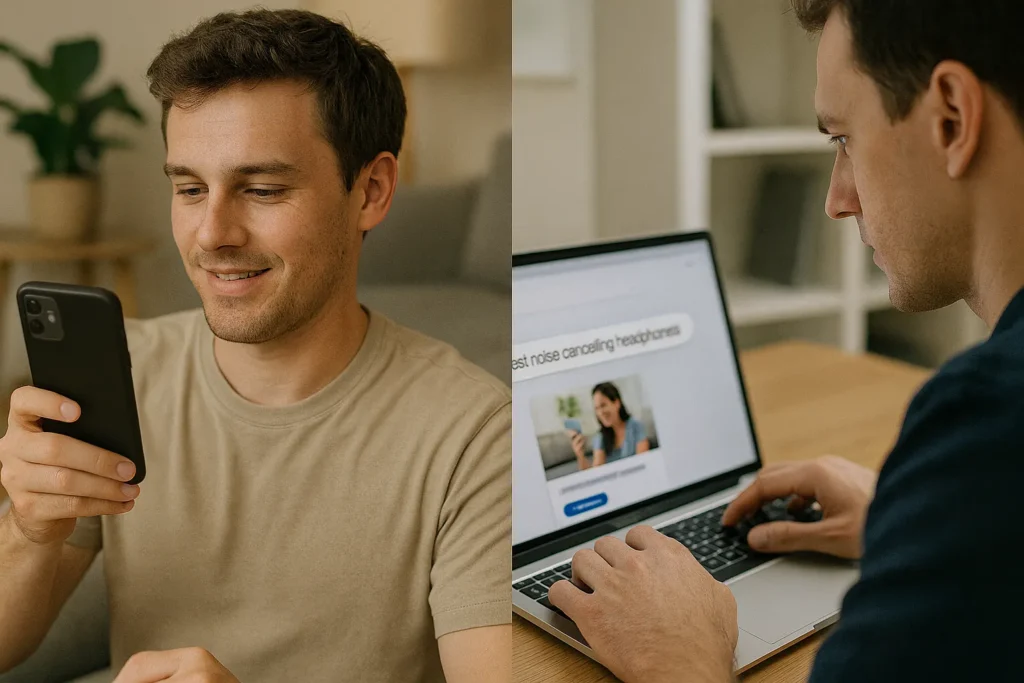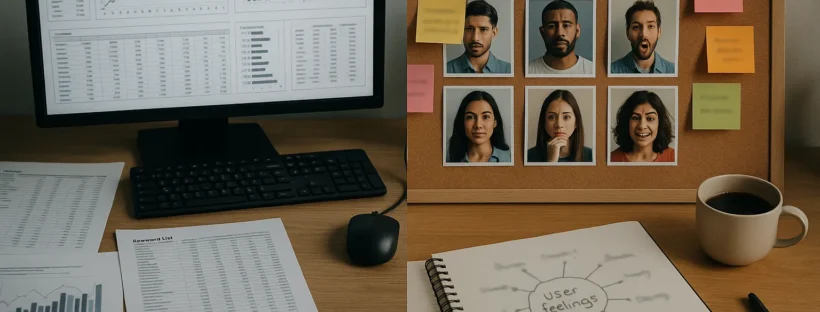Many marketers think finding success with Google Ads depends on picking the right keywords and setting proper bids. They spend hours on technical setup but miss what truly interests people.
In reality, the best ads work because these marketers understand the way people think, feel, and decide to buy things. Over the years, we ran many campaigns and saw how two setups that looked identical on paper performed differently depending on their psychological appeal.
In this article, we’ll discuss the psychology of Google Ads and show you how to write persuasive ad copy. We’ll also learn how to boost your campaign performance with effective creatives and testing.
Want to find out what makes people interested in your ads? Let’s get started.
The Psychology of Google Ads: Core Principles
When people click your ads, they do it because you have managed to trigger their interest in some way. And no, it’s not due to the nice pictures you use or your clever wordplay. Rather, your use of psychological factors like wanting to fit in or fear of missing out (FOMO) plays a huge role.
The fact is, these psychological tricks work by connecting to what people want deep down. We all like to feel good about our choices, right? When an ad taps into that feeling, we click instantly as it promises us a small win or a bit of comfort.

Let’s look at how human psychology plays out in your ads.
Creating Persuasive Ad Copy with Cognitive Biases
Your brain loves shortcuts when you need to make choices quickly. Psychologists call these shortcuts heuristics, and they work much faster than careful thinking. The problem is that heuristics can also cause cognitive biases, which are mental blind spots that push your choices in certain directions without you realising it.
Take the bandwagon effect, for example. It makes us want what everyone else has. So, when an ad says, “Thousands of customers love this product,” it plays on that bias. That’s why when we see other people buying a product, we suddenly think, “Maybe I should get this too.”
Now, let’s talk about confirmation bias. This one makes people search for proof of what they already believe. For this reason, your ad copy should fit your audience’s existing values.
We’ll end with a quick example. Say you sell eco-friendly products. If you want to get the best results, don’t waste time trying to sell your product to those who don’t care about the environment. Instead, speak to the people who already care. Your words will connect better with them due to the common belief, they’ll trust you more, and are more likely to buy from you.
Essential Ad Conversion Tips Using Scarcity
Nothing pushes people to act faster than the fear of missing out. In psychology, we call it scarcity. Sometimes it’s about time, like a countdown or deadline. But other times it’s about stock, like only a few items left. Both types create pressure, and they make people act quickly.
We can look at these scarcity tactics one by one.
Time Scarcity
Time limits are the easiest way to show scarcity. When a deadline comes up, people feel the push to act now instead of waiting. You know the lines “Sale ends Friday” or “Only 24 hours left”? They spark that quick “I’d better act now” feeling.
And guess what, it works. We know of one clothing brand that saw its sales jump 250% by adding limited-time shipping deals. It’s unbelievable!
Stock Scarcity
Next up is stock scarcity. It works in a slightly different way but is just as effective. Messages like “Only 3 left” or “Low stock warning” push people to grab items before others do.
Though you have to stay honest about your limits. Our analysis has shown that fake scarcity always backfires. That’s because people can detect lies and eventually lose trust in your brand completely. But real scarcity can increase your sales by a whole lot.
Boosting Campaign Performance with Creatives and Testing
Why do some ad campaigns succeed while others flop entirely? The difference-maker here is the approach of combining great content with the right testing approach.
Sure, a strong copy and eye-catching visuals may pull people in, but that’s only the opening move. After that, testing shows you where your budget works best.

How about we break down the way this method works in real campaigns? Keep reading.
Writing Ad Copy Examples with a Clear Call to Action (CTA)
Look, a simple ad copy might look okay, but most people tend to just skip it. Weak calls-to-action (CTA) also make them unsure about clicking, so you need clear words that speak to your audience in their everyday language.
For example, if you sell B2B software, try speaking the way business owners actually speak. But if you help families save money, use the voice of someone who understands their regular struggles.
Also, you need a CTA that tells people exactly what to do next. Skip the boring stuff like “click here” or “learn more”, and go with something stronger like “Get your free quote today” or “Start saving money now.”
From our experience, the best CTA combines an action word with a clear benefit. A quick example is “Download your free guide”. It works far better than just “Download” because people like to know what they will get when they click an ad.
Using High Quality Images to Capture Attention
When people see an image, their brain processes it much faster than words. In fact, the right image can catch attention before anyone reads a single line. Even more, a good picture makes people pause, and that first look often decides if they’ll click your ads or keep moving.
Here are the types of images that work best:
- Product Focus: If you show your product in real situations instead of on a plain background, people find it more relatable. They can picture themselves using it, and that view changes how they think about it. The choice to buy then feels real, clear, and far more tempting.
- Human Faces: Use photos of people showing real happiness with your service rather than stiff stock photo smiles. When viewers see such genuine reactions, they feel a quick emotional connection.
Lowering Ad Spend with Effective A/B Testing
A/B testing is a way to compare two versions of something to see which one works better. For ads, it usually means showing one group of people version A and another group version B. You can then look at the clicks or sales to see which version performs best.
Follow these steps to get reliable results from your A/B testing:
- Set a Clear Goal: Every good test begins with a clear goal in mind. Maybe you want more clicks, more sign-ups, or more sales. Without that clarity, the test feels scattered. For instance, testing a headline for clicks works very differently from testing a price for conversions.
- Change One Thing at a Time: Only adjust one part of your ad to get reliable answers. That means you can try a new headline or button colour, but not both. If too many things change, you won’t know which one actually caused the result.
- Keep Groups Fair: Each version of your test should go to groups that are the same size and type. Otherwise, the numbers won’t give you a fair picture. Think of it like a cake at a party, everyone only feels treated fairly when the slices are of equal size.
- Run the Test Long Enough: You need to run tests for longer because quick results can be misleading. For example, one busy day of traffic might make an ad look like a winner, but that spike could just be luck. When you keep the test running for a week or two, the numbers settle and give you results you can trust.
- Look Beyond Clicks: Clicks only tell part of the story, so you need to dig deeper. The real answers come from sign-ups, sales, and people coming back. Consider a headline that pulls in plenty of clicks but brings almost no sales. If you check those bigger numbers, you’ll see which version truly helps your business.
- Use What You Learn: Once you find a winner, apply it right away. Then plan another round of testing. Each cycle should build on the last and improve your results over time.
Digital Marketing and User Mindset
People think in different ways depending on the platform they’re on. For instance, someone scrolling through social media acts nothing like someone searching on Google.

When you understand these changes in mindset, you can write ads that fit each platform better. Let us explain what each mindset looks like.
Reaching a Custom Audience Through Facebook Ads
Facebook users usually scroll in what we call “discovery mode.” They check out photos, watch videos, and browse without searching for anything in particular. And when your ad shows up on their feed, it has to catch their attention quickly.
Now, your main goal on Facebook should be to avoid being pushy and make your ad feel like normal content. That’s why strong visuals and curious headlines work so well; they give people a reason to pause and take a look at your ads.
From what we’ve seen, the best Facebook ads create interest in products people didn’t even know they needed. In other words, the ad plants the idea and builds the demand on its own.
Adapting Copy for Instagram Ads and Google Search
How do Instagram users behave compared to searchers on Google? In many ways, they act more like Facebook users. On Instagram, people scroll through photos and stories looking for inspiration and fun rather than quick solutions. So, your ads need to match naturally into their visual feed.
On the flip side, people switch into problem-solving mode on Google. Say someone types “emergency plumber” or “best running shoes”. They already know what they want.
Not only that, but ads on Google speak directly to the searcher’s exact query. Like, if they search for “cheap car insurance,” your ad copy should mention affordable rates and quick quotes. Always try to match their language and solve their specific problem immediately.
TL;DR: Social media is for discovery, while Google is for finding answers fast.
The Psychology That Gets People Clicking
We’ve covered a lot of ground in this article, so let’s wrap things up with the main points.
We talked about cognitive biases, like the bandwagon effect and confirmation bias, and how they help you write natural copy. We also looked at how scarcity creates urgency. Plus, in the last part, we saw how people think differently on social media and on Google.
Do you want help from experts to implement these psychological strategies in your Google Ads? Contact us at SlamStop today. We’ll show you how to apply these techniques to boost your campaign performance and get more customers clicking on your ads.
